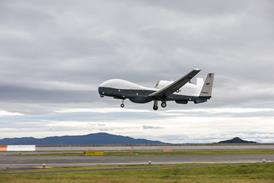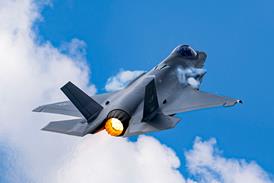THE LIFT ENGINE under development for the McDonnell Douglas (MDC) Joint Strike Fighter (JSF) contender is to combine technology from General Electric, Allison and Rolls-Royce.
The GEA-FXL is a 71kN (16,000lb)-thrust-class turbofan less than 1.5m high and 1.2m diameter, mounted behind the cockpit in the short-take-off/vertical-landing (STOVL) variant of MDC's JSF design, which uses a "lift-plus-lift/ cruise" propulsion system.
Weight and exhaust temperature, are the critical factors in design of the lift engine, says Allison. To maximise the bypass ratio, the team has designed "the smallest core possible", combining fan technology from GE's F101 military turbofan, core components from Allison's Advanced Turbine Engine Gas Generator (ATEGG) demonstrator and turbine designs from R-R's RB211 commercial turbofan.
The GEA-FXL is a ten-stage engine. The two-stage fan features high-aspect-ratio tip-shrouded blades similar to those in the F101, to provide the shortest-possible stage length.
The five-stage high-pressure (HP) compressor and single-stage HP turbine are derived from the ATEGG high-temperature core. The two-stage low-pressure turbine is based on the RB211's shrouded HP turbine, again to reduce stage length.
Effective mixing of the bypass and core exhausts in the shortest-possible distance is essential to reduce ground temperatures in STOVL operation, and the engine has an advanced multi-lobed mixer.
Allison says that tests have shown, the lift-engine exhaust temperature to be "hundreds of degrees lower" than that of the lift/cruise engine - the Pratt & Whitney F119 in MDC's design, for the JSF concept-demonstrator aircraft.
Originally competing to supply MDC with a lift engine, R-R joined the JSF propulsion team after acquiring Allison in 1995. Allison and R-R are also undertaking development of a shaft-driven lift fan for the STOVL variant of Lockheed Martin's JSF contender.
Source: Flight International























